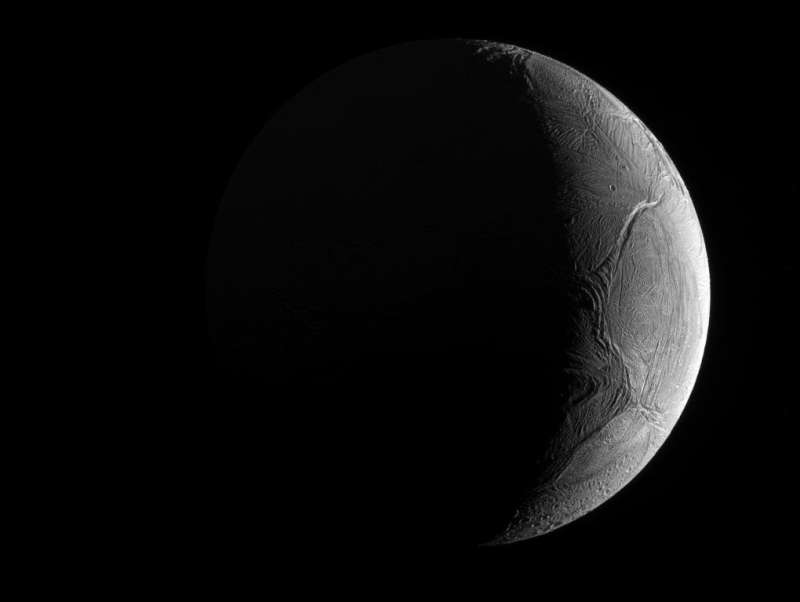Crescent Enceladus

Explanation:
Peering from the shadows, the
Saturn-facing hemisphere of
tantalizing
inner moon Enceladus
poses in this Cassini spacecraft image.
North is up in
the
dramatic scene captured last November as
Cassini's camera was pointed in a nearly sunward direction
about 130,000 kilometers from the moon's bright crescent.
In fact, the distant world reflects over 90 percent of the sunlight
it receives, giving its surface about the same reflectivity as
fresh snow.
A mere 500 kilometers in diameter,
Enceladus is
a surprisingly active moon.
Data collected during Cassini's
flybys and years of images have revealed the presence of
remarkable south polar
geysers and a possible
global
ocean of liquid water beneath an icy crust.
Authors & editors:
Robert Nemiroff
(MTU) &
Jerry Bonnell
(USRA)
NASA Web Site Statements, Warnings,
and Disclaimers
NASA Official: Jay Norris.
Specific
rights apply.
A service of:
LHEA at
NASA /
GSFC
& Michigan Tech. U.

